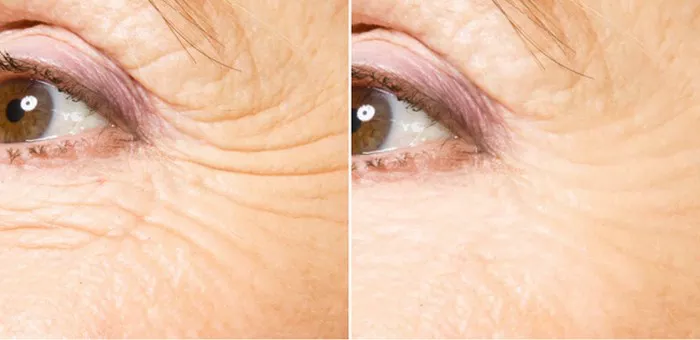In the ceaseless pursuit of youthful and vibrant skin, the role of anti-aging creams stands as a cornerstone. With a myriad of options available, understanding the key components and considerations when selecting an anti-aging cream becomes imperative. In this comprehensive guide, we unravel the science behind effective anti-aging creams, empowering you to make informed choices for a skincare routine that defies the hands of time.
Decoding Anti-Aging Creams
Defining Anti-Aging Creams:
Anti-aging creams, a category within the broader realm of skincare, are formulated to target and alleviate signs of aging. These signs may include wrinkles, fine lines, loss of firmness, and uneven skin tone. The efficacy of these creams is largely determined by their ingredients and the science behind their formulations.
Common Ingredients:
Anti-aging creams boast a spectrum of ingredients, each playing a unique role in the quest for youthful skin. From antioxidants and retinoids to peptides and hyaluronic acid, the synergy of these components addresses various aspects of aging, contributing to a comprehensive anti-aging solution.
Understanding the Aging Process:
Intrinsic and Extrinsic Aging:
Before delving into the realm of anti-aging creams, understanding the two primary facets of aging is crucial. Intrinsic aging, influenced by genetic factors, occurs over time. Extrinsic aging, driven by environmental factors like sun exposure and lifestyle choices, accelerates the aging process.
Targeting Intrinsic Aging: Hydration and Nutrients:
For addressing intrinsic aging, hydration becomes paramount. Anti-aging creams rich in nourishing ingredients like vitamins, antioxidants, and essential fatty acids work synergistically to replenish the skin’s moisture barrier and support cellular health.
Choosing the Right Anti-Aging Cream:
Skin Type Considerations:
The diversity of skin types necessitates a tailored approach. Anti-aging creams come in formulations suitable for various skin types – dry, oily, combination, or sensitive. Understanding one’s skin type allows for the selection of a cream that aligns with specific needs.
Day and Night Formulations:
Different times of the day demand different formulations. Day creams often prioritize sun protection and antioxidant defense, while night creams focus on reparative and regenerative ingredients, optimizing the skin’s natural repair processes during sleep.
Key Ingredients in Effective Anti-Aging Creams
Retinoids:
Retinoids, derivatives of vitamin A, are hailed as the gold standard in anti-aging. They stimulate collagen production, promote cell turnover, and mitigate the appearance of fine lines and wrinkles. Prescription-strength retinoids and over-the-counter retinol offer varying levels of potency.
Antioxidants:
Antioxidants, such as vitamin C and E, act as guardians against free radicals – unstable molecules that contribute to skin aging. These ingredients neutralize free radicals, preventing oxidative stress and supporting the skin’s resilience.
Peptides:
Peptides are amino acid compounds that play a pivotal role in collagen synthesis. By incorporating peptides into anti-aging creams, manufacturers aim to stimulate collagen production, fostering skin firmness and elasticity.
Hyaluronic Acid:
Hyaluronic acid, a naturally occurring substance in the skin, functions as a hydration reservoir. Anti-aging creams infused with hyaluronic acid attract and retain moisture, contributing to plump and supple skin.
Tailoring the Routine
Layering Products:
Customizing an anti-aging skincare routine often involves the art of layering products. Lightweight serums containing potent ingredients can be layered under richer creams to maximize the benefits of each component.
Sunscreen as a Non-Negotiable:
Irrespective of the chosen anti-aging cream, the inclusion of sunscreen is non-negotiable. UV rays accelerate the aging process, making sun protection a vital element in preserving the efficacy of anti-aging products.
Choosing Wisely
Research and Reviews
The vast landscape of anti-aging creams necessitates thorough research. Exploring reviews, consulting dermatologists, and understanding product formulations empower consumers to make informed decisions aligned with their skincare goals.
Product Trials
Before fully incorporating a new anti-aging cream into the routine, patch testing is essential. This helps identify any potential allergic reactions or sensitivities, ensuring a safe and effective integration into the skincare regimen.
Addressing Specific Concerns
Targeting Dark Spots
For those grappling with dark spots and hyperpigmentation, creams containing hydroquinone and niacinamide offer targeted solutions. These ingredients work to lighten discoloration and even out skin tone.
Fighting Fine Lines
To combat fine lines, peptides and retinoids take center stage. Their collagen-boosting and cell turnover properties contribute to smoother, more youthful-looking skin.
Consistency and Patience
Timeline for Results
Visible results from anti-aging creams take time. Consistent and patient application is key, with most individuals witnessing noticeable improvements in skin texture and appearance within several weeks to a few months.
Adjusting the Routine
As the skin’s needs evolve with age and seasonal changes, the anti-aging routine may require adjustments. Adapting to these variations ensures the continued effectiveness of chosen products.
Conclusion
In conclusion, the quest for effective anti-aging creams is an empowering journey rooted in science and personalized choices. Understanding the ingredients, tailoring the routine to individual needs, and embracing consistency are fundamental to achieving and maintaining youthful, radiant skin. The world of anti-aging is ever-evolving, offering a spectrum of options to empower individuals in their pursuit of timeless beauty.


